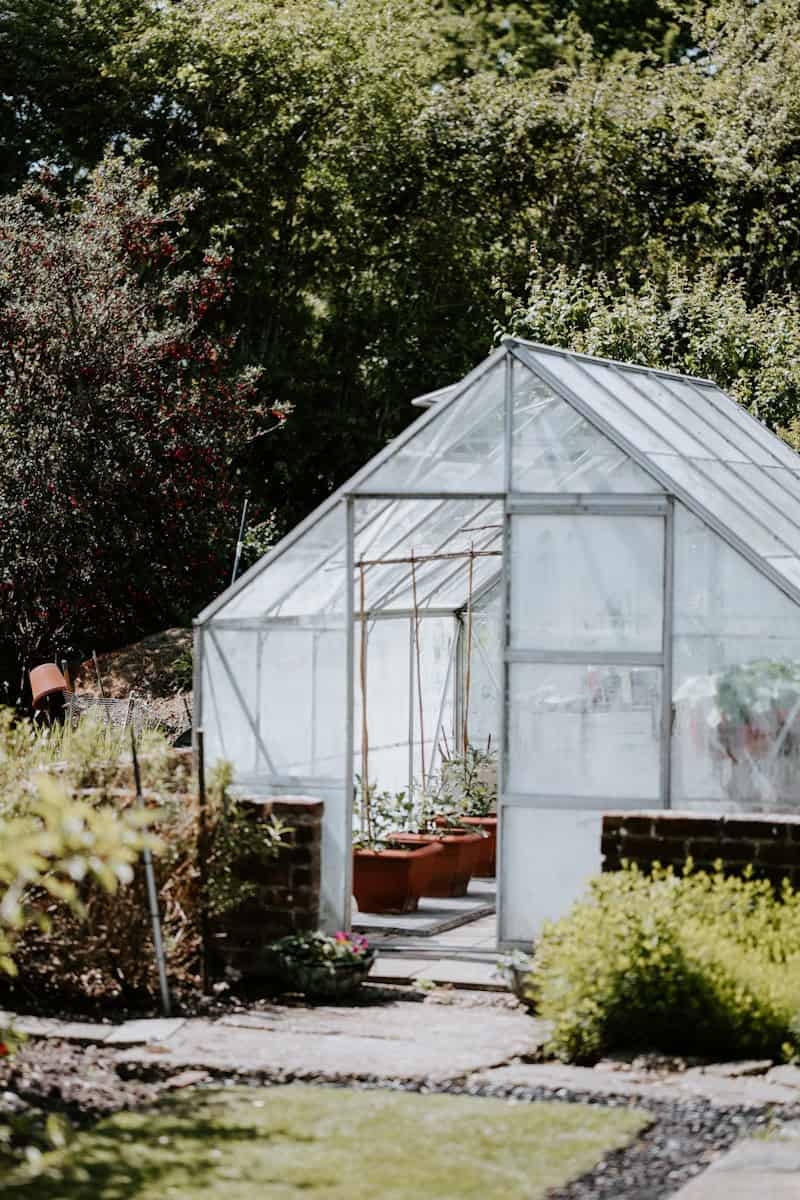A greenhouse can be a perfect way to grow plants year-round and protect them from the elements. Building your own greenhouse allows you to control the environment for your plants, making it easier to ensure they thrive. Whether you want to grow vegetables, flowers, or tropical plants, a greenhouse can help you succeed.
To begin building a simple greenhouse, start by selecting the right materials. Popular choices include wood, PVC pipes, and polycarbonate sheets. These materials are strong and provide good insulation. Stretching plastic film tightly over the frame will create a solid structure. Make sure to attach the film securely at the bottom to keep it from coming loose.
Next, prepare the ground inside your greenhouse. Laying down small, loose gravel helps with drainage and keeps the area dry. Installing support beams into the ground will give your greenhouse a sturdy base. Following these basic steps, you can create a greenhouse that will help your plants grow in any season.
Planning Your Greenhouse
Selecting the best location, size, and materials is important for building your greenhouse. It ensures your structure stands strong and functions well.
Selecting the Right Location
The best spot for a greenhouse gets lots of sunlight. Make sure it faces south or southeast to capture the most light. Avoid putting it under trees that create shade or drop leaves. Look for flat ground. Rocks, tree stumps, and other things should be cleared away.
Good drainage is key. If water pools around your chosen spot, consider another location or find ways to improve drainage. Access to water and electricity should be easy without needing long hoses or extension cords.
Choosing the Greenhouse Size and Design
Decide how large you want the greenhouse based on your needs. A small greenhouse of about 6×8 feet works for beginners. Larger sizes like 9×16 feet give more room for lots of plants.
The design can be simple with a DIY kit or more complex with custom plans. Consider ease of access, by making paths wide enough to move around. Include windows and vents to control temperature and airflow. Take local climate into account to choose the best design for your region.
Materials and Budgeting
Decide on the best materials based on cost and climate. Wood frames are sturdy but need upkeep. Metal like steel or aluminum is strong and lasts long. PVC is lightweight and easier to work with.
Cover the frame with polycarbonate panels, glass, or plastic sheeting. Polycarbonate is strong and insulates well. Glass looks nice but needs care. Plastic sheeting is cheaper but less durable.
Create a budget to keep track of costs. Include the price of materials, tools, and any extra features like ventilation or heating systems. This helps avoid surprises and ensures the greenhouse project stays affordable.
Material Options:
| Material | Pros | Cons |
|---|---|---|
| Wood | Strong, natural look | Requires maintenance |
| Steel/aluminum | Long-lasting, durable | More expensive |
| PVC | Lightweight, easy | Less sturdy |
| Polycarbonate | Good insulation, tough | Higher cost |
| Glass | Aesthetically pleasing | Breakable, heavy |
| Plastic sheet | Low cost, flexible | Less durable |
Constructing the Greenhouse
Constructing a greenhouse involves building a solid foundation, erecting the frame, and installing doors and vents. This helps ensure a stable, well-ventilated environment for your plants.
Building the Foundation
The first step in building your greenhouse is creating a strong foundation. Start by clearing the area of rocks and other debris. Level the ground using a shovel or garden rake.
Next, decide what type of foundation you want. For a simple option, use gravel. Spread small gravel evenly on the ground for good drainage.
For a more permanent solution, consider concrete slabs. Mark the area and pour the concrete. Allow it to dry completely. Both methods will give your greenhouse a stable base.
Assembling the Frame and Covering
Assemble the frame using materials like cedar or framing lumber. Cedar is durable and resists rot. Make sure to choose a size that fits your space.
Attach the rafters and truss to strengthen the frame. Once the frame is up, cover it with polycarbonate sheets or greenhouse plastic. Polycarbonate is clear and strong, letting in plenty of light.
Attach the covering tightly to the frame. Ensure there are no gaps. This helps to keep the greenhouse warm and secure.
Installing Doors, Vents, and Glazing
Install a proper door that fits well. This will provide easy access and help maintain internal temperature. Consider sliding doors for smaller spaces.
Add vents or fans for air circulation. Proper ventilation is crucial to prevent overheating. Place vents on the top and sides of the greenhouse for the best airflow.
Finally, install glazing. Glazing includes roof panels and windows. Use a clear, strong material like polycarbonate. This will let light in and keep the greenhouse secure. Proper glazing helps in temperature control and plant growth.
Greenhouse Features and Customization
Making a greenhouse can be fun and rewarding. Two key aspects to focus on are climate control and the interior layout.
Climate Control and Insulation
Good climate control is crucial for a successful greenhouse. Temperature and humidity need to be just right for plants to thrive. Insulation materials like polycarbonate or glass help keep the heat inside. Ventilation is also important. Roof vents, side vents, and fans are common tools to manage airflow.
Using heaters can extend the growing season by keeping plants warm during cooler months. Proper insulation and heaters help protect plants from extreme temperatures. They also help save on energy costs by keeping the greenhouse warm efficiently.
Interior Layout and Accessories
The inside of a greenhouse should be organized for easy access and efficient use of space. Shelves are helpful for organizing plants and tools. They also free up floor space for larger plants or water containers. Potting benches give a dedicated area for planting and repotting.
Using storage containers keeps gardening tools and supplies in one place. This organization makes it easier to work in the greenhouse without losing tools. Grow lights can provide extra light on cloudy days or during the shorter days of winter.
Frequently Asked Questions
Building a greenhouse involves choosing the right materials and following specific steps. Here are common questions and answers to help guide the process.
What are the steps to construct a greenhouse for novices?
First, select the location. Make sure it’s level and has good sun exposure. Remove rocks and debris. Next, decide on the frame material like wood, PVC, or metal. After that, choose a covering such as polyethylene or glass. Finally, assemble the frame and secure the covering.
What materials are needed to build an economical greenhouse?
Budget-friendly materials include PVC pipes for the frame and polyethylene sheets for the covering. You also need basic tools like a shovel, screws, and a drill. Using recycled materials like old windows can also help cut costs and make construction eco-friendly.
How can one build a greenhouse that is suitable for cold climates?
Insulation is key. Use double-layer polyethylene or polycarbonate panels. Install a heating system such as electric or gas heaters. Make sure to have good ventilation to avoid condensation buildup. Positioning the greenhouse to get maximum sunlight during winter helps too.
What guidelines should be followed when constructing a wooden greenhouse?
Start by selecting treated wood to prevent rot. Plan your design and measure carefully before cutting. Use bolts and screws rather than nails for better stability. For the covering, select a durable material like polycarbonate. Ensure the structure is square and level during assembly.
What considerations are important for building a small greenhouse for vegetable cultivation?
Choose a location with at least six hours of sunlight daily. Make sure the greenhouse has good drainage. Use raised beds or pots within the greenhouse to optimize space. Install a simple ventilation system like windows or vents to keep air circulation steady.
What is the most cost-effective method to establish a functional greenhouse?
Using a DIY approach with easily accessible materials like PVC and polyethylene can be very cost-efficient. Repainting and reusing old windows is another great way to save money. Plans and kits found online can also provide budget-friendly options for beginners.







